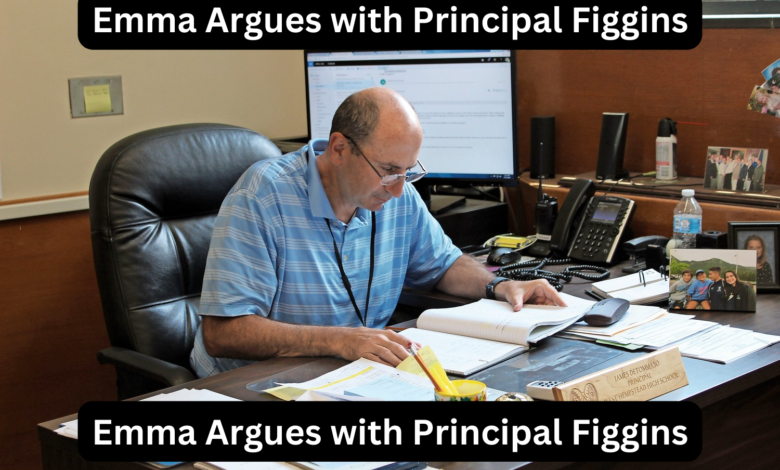In a captivating turn of events within the educational corridors, the confrontation between Emma and Principal Figgins has become a topic of considerable debate and analysis. This article delves deep into the layers of this conflict, shedding light on the underlying issues, implications, and the broader context within which this altercation takes place.
The Catalyst of the Conflict
At the heart of the matter is a clash of ideologies and principles. Emma, known for her dedication to student welfare and progressive educational methods, finds herself at odds with Principal Figgins, whose traditionalist stance and administrative rigidity often prioritize institutional protocol over individual student needs. The argument, as reported by several eyewitnesses, revolved around a new policy implementation that Emma believed would adversely affect the students’ mental health and overall well-being.
The Dynamics of Power and Authority
Principal Figgins, armed with administrative power and the responsibility to maintain order and discipline within the institution, stands as a symbol of the traditional educational hierarchy. His approach, often seen as bureaucratic and inflexible, contrasts sharply with Emma’s more empathetic and student-centered philosophy. This incident brings to light the age-old debate of authority versus advocacy, where the lines of right and wrong blur in the face of institutional norms and individual convictions.
The Impact on School Culture
The ripple effects of this confrontation extend far beyond the confines of the principal’s office. They seep into the classrooms, the hallways, and the very fabric of the school’s culture. Students and faculty alike are drawn into a silent referendum, choosing sides in a debate that encapsulates larger societal issues such as mental health awareness, the role of education in personal development, and the balance between discipline and support.
The Role of Empathy in Educational Leadership
At the core of Emma’s argument is a plea for a more empathetic approach to educational leadership. Her confrontation with Principal Figgins underscores the necessity of understanding and compassion in dealing with students who come from diverse backgrounds and face various challenges. Emma’s stance is a call to action for educational institutions to reevaluate their policies and practices, ensuring they serve the best interests of the students, not just the administration’s procedural convenience.
The Broader Implications for Educational Policy
This incident is not an isolated one. It reflects a broader trend of educators across the globe challenging outdated norms and advocating for reforms that prioritize student well-being and holistic development. The argument between Emma and Principal Figgins serves as a microcosm of the ongoing struggle to redefine educational success, shifting the focus from mere academic achievement to the overall growth and happiness of students.
Navigating the Path Forward
The resolution of such conflicts is not straightforward. It requires dialogue, compromise, and a shared commitment to the welfare of the student body. While Emma and Principal Figgins represent two opposing viewpoints, their ultimate goal is the same: the education and betterment of their students. Finding common ground is essential in moving forward, making the educational environment more inclusive, supportive, and conducive to learning.
Conclusion: Lessons Learned and the Way Forward
The altercation between Emma and Principal Figgins is more than just a heated exchange of words; it is a reflection of the evolving landscape of education. It highlights the need for adaptive leadership, policies that reflect the changing needs of students, and an educational philosophy that embraces empathy and understanding as foundational values. As this conflict unfolds, it serves as a poignant reminder of the challenges and opportunities that lie in reimagining educational spaces that truly cater to the diverse needs of the student population. The dialogue initiated by Emma’s brave stance is a step towards a more progressive, inclusive, and empathetic educational system.

